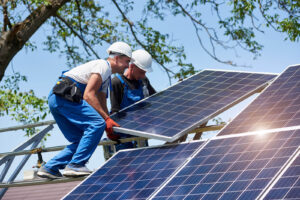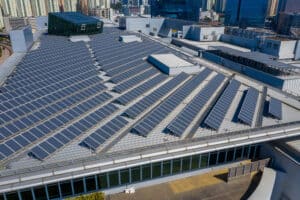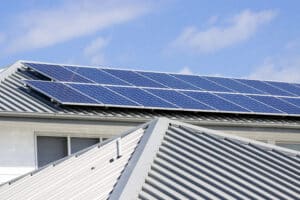Now that you have installed a solar energy unit, you’re ready to start decreasing your emissions and increasing your savings and maximise your returns.
While there are many opinion posts about saving money through the installation of a battery storage system of receiving a feed in tariff, we wanted to write a blog post that can cater to everyone’s solar system regardless of what extra you receive.
So, here are our top 5 tips on how you can save money through solar:
- Shifting your energy consumption:
When you buy a solar system, the returns you receive will not just depends on how much solar energy you use, but also when you use electricity in general.
As TIME is one of the most crucial factors that is often overlooked for solar, our first tip is to use your power during sunlight hours.
Through simply shifting your appliance’s energy consumption to mid-day (when your solar is producing the most energy) you will naturally start saving a LOT of money.

The graph above is an estimation of the average daily consumption. Overlaid is a solar production curve.
As the demand for energy increases due to increased consumption, we can infer the cost of retail electricity will also increase. Consumption – represented by the blue line spikes up around 7-8am, and quickly drops. Average power consumption picks back up again at 6pm, when people return home.
The orange line represents the production of a typical 5kW solar system during Summer on a clear day. As you can see, the more energy you consume during peak production the better off you will be. Even if you dip back into the grid during peak times, the estimated cost that you will pay for commercial energy is lower during peak sun hour times. However, even if you pay less for commercial energy during peak sun hours, the total cost of running all your appliances at the same time will add up to a lot of money.
Make sure to plan the use of your appliances while the solar system is generating its peak electricity. The more appliances that you can schedule to run during sunlight hours, the more benefit you will gain both financially and through offsetting your emissions.
Please keep in mind that the above graph may not be representative of your situation. Your solar system will not always produce constant power throughout the day and weather conditions will affect your production curve
It is important to know that the solar system doesn’t produce constant power throughout the day. The power peaks around mid-day, as such you should sequence your appliances between late morning and early afternoon. Remember if you run all the appliances at the same time you will end up using too much from the grid.
To know more about the differences between sunlight vs daylight hours, we’ve written a more in-depth blog to get you started Daylight vs Sunlight Hours.
2. Using one appliance at a time.
Depending on the size of the system you have installed, there is a chance that you could accidentally dip into the grid and pay for commercial electricity. To decrease your chances of using and paying for grid energy, make sure that you use one appliance at a time.
This might not seem efficient, but we need to keep in mind that the appliances we use are not efficient.
For example, if you use a 1,000W appliance, you will use 1kW of electricity. If you were to turn on another appliance while you turn on the first appliance, you may run the risk of using more electricity than your solar panels are currently producing. Now think about all the appliances that you may have plugged in and turned on/left on standby in your home, all these small thing might seem negligible, but when combined with the above scenario, the chances of you dipping back into the grid are maximised. If you are wondering how much energy each appliance is using, we have compiled a nifty list of the most common home appliances here: How to Calculate How Much You Spend Per Week on Each Appliance.
Make sure you plan out when you will use your appliances, for example, set a timer for your dishwasher to run at 1pm, and then for your washing machine to turn on at 1:30.
3. Installing or using energy efficient appliances
Now we do not endorse buying new appliances just to cut your energy costs. That isn’t achievable for many households, and if it were, it would not be environmentally friendly. If it’s not broken and you still use it, don’t throw it away! Make do with what you have and make those switches when things start to break down.
However, one switch that we do endorse are your lightbulbs. Buying and installing energy efficient lightbulbs is a breeze – they basically pay for themselves in savings.
However, don’t fret about switching out all the lights in your house with energy efficient bulbs. Start off with the lights that you do use a lot (like your bedroom or kitchen lights) and keep all other un-necessary lights off unless you absolutely need to use them.
Remember! Don’t throw your lightbulbs into the bin! The proper way to dispose of your old lights is to recycle them, check out your local council’s website for details, or visit your nearest recycling centre.
Small steps and energy conscious decisions will help you cut your bill and reduce your carbon footprint.
4. Switch off unused appliances at the wall
Most people don’t realise that turning an appliance off with a remote and not switching them off at the power outlet will add up.
These dormant appliances are not truly ‘off’ but are in a ‘sleep mode’, adding quite a significant amount to your base load. Imagine your many appliances such as your TV, Phone/Tablet Chargers, Washing Machine, Stereo, Computers, Microwave, Dishwasher and Dryer idling, slowly draining electricity as it sits and waits for you to finally use it.
Remember the energy you use by leaving an appliance like your TV switched on at the outlet at night will not be offset from your Solar System at all.
If you’re tech savvy, you can buy remote controlled power outlets available at your local hardware store which you can remotely turn off. But, making it a habit to switch off your non-essential appliances at the wall is something everyone can do.
5. Balance your savings expectations and discard the unreasonable ones.
We wanted to conclude this list with our most important tip.
Whatever your intentions for going solar, most people will expect more than what they get. Solar is not a cure-all for your electricity worries.
Most people, gloss over the limitations a solar system has. This is possibly due to the way solar has been portrayed in media, or perhaps the elusive promise of a savings 100% guaranteed.
Whatever those expectations are, discard them.
Having the expectation that solar will guarantee you savings can be costly. One trend we tend to see in new clients, is their energy usage spiking more than the solar offsets their additional use. When the next electricity bill arrives, they are shocked to see their bill has increased.
Solar will NOT reduce your electricity bill if you do not actively change your consumption habits.
It is only when you are willing to put in some effort to be mindful of your energy use that you can see those energy savings.








